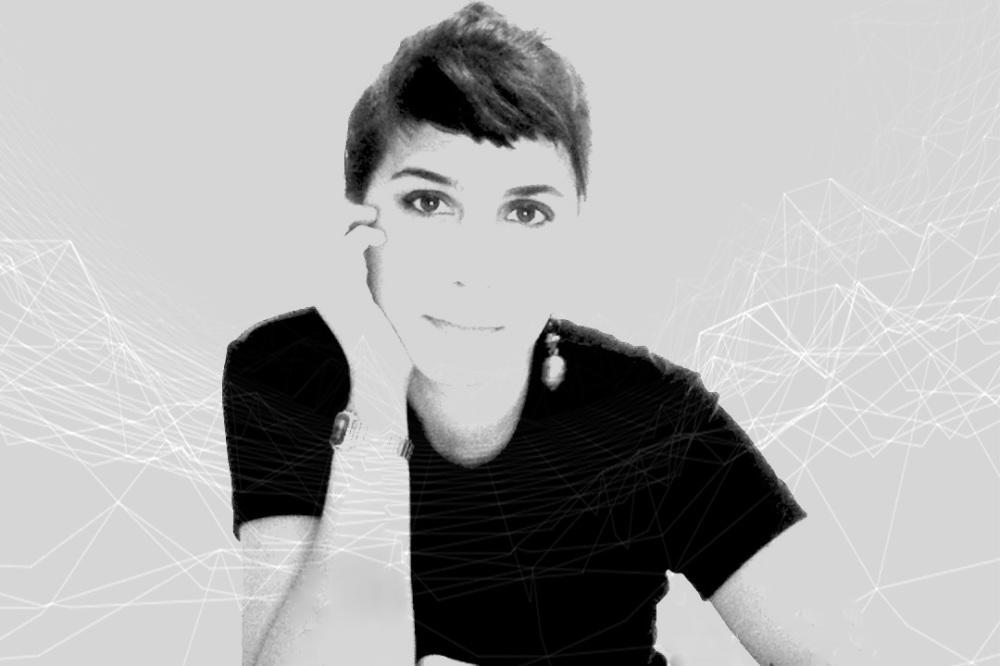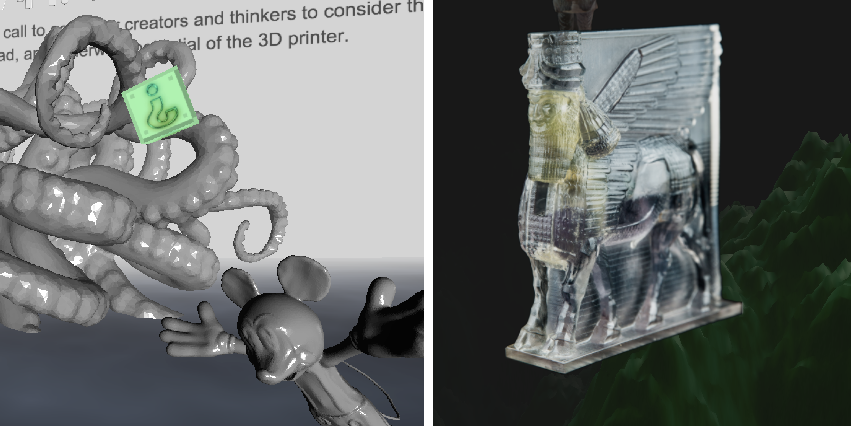
Iranian media artist Morehshin Allahyari and Daniel Rourke, creators of the 3D Additivism group, even have their own public declaration in the form of the 3D Additivist Manifesto, which is a rather darkly-themed statement of their thoughts, goals, and intentions. While it does at first glance seem perhaps a bit frightening and overly intense, it is meant to further encourage 3D printing for changing the world.
We took a look at their work just last spring as they were requesting entries for their 3D Additivist Cookbook, meant to inspire a larger conversation for the additivist movement. We’ve also taken a look at Allahyari’s work Dark Matter, aimed at the Iranian government.
“Initially we started a Tumblr posting original content, photos, critiques, and mini-interviews,” Arsala told The Creators Project recently. “Then we grew to build our own gallery for collaborations and our new media magazine site.”
The gallery is called PRINT your REALITY. With this collection, the artists have created a striking exhibit which uses virtual reality to exhibit the works created in 3D print by Allahyari. While the gallery works like a typical slideshow in which you can scroll back and forth, you are also able to interact with her artwork as well by manipulating and turning them. There’s also an extremely unique Q&A available with the designer available within the gallery. Viewers can pose questions and watch her answer them on video.
“After seeing Morehshin’s work in a tech context in San Francisco, we thought we had to let our people know how rad you can get as an artist and with 3D printing specifically,” says Beglari. “With PRINT your REALITY, we wanted people who may not already be familiar with Morehshin or the terrain of 3D printing to be visually enticed by interacting with a literal terrain of 3D models and additivist imagery as a means of accessible introduction.”
Within the virtual reality gallery, they’ve displayed the 3D Additivist Manifesto, along with two other exhibits which are politically inclined the Middle East.
“I see it as an art piece itself that offers a unique experience with almost VIP access to the 3D models in a way you couldn’t get in a formal gallery or static video setting,” says Beglari.
In Material Speculation: ISIS features 3D reconstructions of artifacts destroyed by ISIS at Mosul Museum. Still a work in progress, Allahyari focuses on making 3D models of a number of ancient artifacts from the Roman period city of Hatra and Assyrian artifacts from Nineveh.
All of these statues were leveled and destroyed by ISIS last year at the Mosul Museum. Last year, we reported on the devastation of the attacks, as volunteers for the museum were working to compile images of the last artifacts so that they could indeed be 3D printed. While many of the items destroyed by ISIS were replicas, some were originals. As the Jihadists smashed and toppled work after piece of work, the loss to the museum was enormous.
“Material Speculation: ISIS creates a practical and political possibility for artifact archival, while also proposing 3D printing technology as a tool both for resistance and documentation,” states Allahyari in her gallery. “It intends to use 3D printing as a process for repairing history and memory.”
The 3D models are a lot more complex than you might imagine as well, with each object to be sealed for posterity, bearing an internal flash drive, images, maps, files, and videos regarding the artifact and its now-destroyed site.
An incredible amount of work went into gathering research for the Speculation project, with Allahyari reaching out to numerous professionals from archaeologists to the staff at Mosul Museum. This information and the files will all be archived, as well as made available to the public, available for download.
Allahyari was raised in Iran, but moved to the US in 2007. Her goal is to use technology as a philosophical toolset to reflect on objects, and as a poetic mean to document the personal and collective lives we live and our struggles as humans in the 21st century.
[Images: Browntourage / Source: The Creator’s Project]